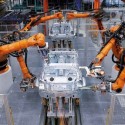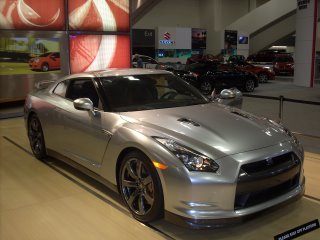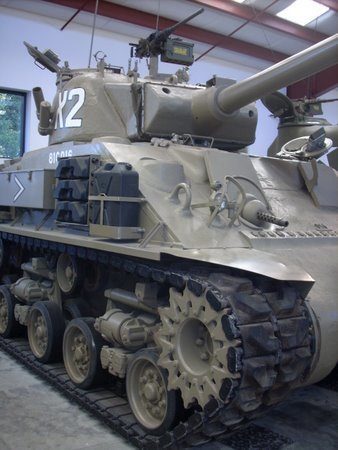— by Evan Weiner —
Sometimes we get caught up in the shiny paint, squeaky tires and satisfying stench of virgin leather seats that we forget about how all the beauty of a new, fine automobile comes together. In fact, to know how and where your car was made only enriches one’s driving experience and it is these production facilities that often trump track figures in determining the superior auto marque. And while hundreds of hours of hand craftsmanship and eyeball-monitored quality has its merits in producing super high end cars from the likes of Bentley and Ferrari, the uber advanced lazar precision of today’s more widely produced sports cars is just as admirable. There’s no better way to delve deeper into this production process than examining the flagship production facilities of Germany’s trophies, BMW and Mercedes.
Enter Mercedes-Benz’s Sindelfingen plant and you enter a trance, a sort of sober blackout. Take the experience of going to buy groceries. You enter the store and fall into an altered state of mind surrounded by fluorescent lighting and millions of food options. Now take that experience, inject some steroids into it, replace food items with supercharged motors and other-worldly robotic machinery and you have yourself Sindelfingen, the auto enthusiast’s voyeuristic peer into the origins of their favorite vehicles. You’ll soon find the process broken into a few simple, understandable steps: Press, Body Assembly, Paint, Powerplant Mating and Inspection. Raw materials are first subjected to nearly 7,400 tons of pressing force and molded into the sweeping curves and sharp, clean edges we come to enjoy in today’s Benzo’s. Perhaps more intriguing than the precision at which body panels are molded is the speed at which this is achieved. By employing lightning fast, automated tool changes, the presses become highly flexible in the shapes they can construct and highly efficient.
Making these pieces a cohesive unit is an astonishing process. You’ll find infinitely limbed robots sniffing around, poking, prodding, shooting lazers and delivering materials. In fact, when the seemingly obsolete human requests a part, it is delivered by a robot that will lap the factory with no human intervention whatsoever. Sound like something out of a science fiction movie? Well, the similarities only grow stronger. Once the shell is sculpted it dives into a steaming slurry of cleaning chemicals where it flips and twirls more gracefully than Germany’s olympic synchronized swimming team. Add numerous layers of environmentally friendly paint mixtures and glosses and you have yourself a mouth watering candy shell. The most important stage follows when body, frame, engine and drivetrain are mated together in what Mercedes calls the ‘Pearl Chain.’ Finish off with an intense round of inspection and testing and before you know it your new S550 is rolling gracefully off the line.
It is important to note that while all the robots, gadgets and lazers are awe-inspiring, it is the efficiency and cleanliness at which they run that really helps deem a manufacturer advanced. Rival BMW’s flagship facility in Dingolfing helps show how accomplished these facilities are. 21,000 people are employed at the Dingolfing Plant, where they manufacture up to 1,300 units per day, or 280,000 automobiles a year; approximately 5.5 million BMW automobiles have come off the production lines since the plant’s inception in 1973. Producing such a magnitude of vehicles with so little impact on the environment is where these facilities shine. Between 1996 and 2000 the sewage water produced during the production of one unit was reduced by 17 percent. In the same period the energy consumption dropped by about 20 percent.
When it comes down to it, the amazing machines we see and enjoy today are rooted in an equally amazing process that reflects a level of ingenuity and advancement that we only see in the automotive industry. So next time you step back and admire your ride, dig deeper and boost your ego even more by realizing the seemingly magical process by which your prized machine came about.






